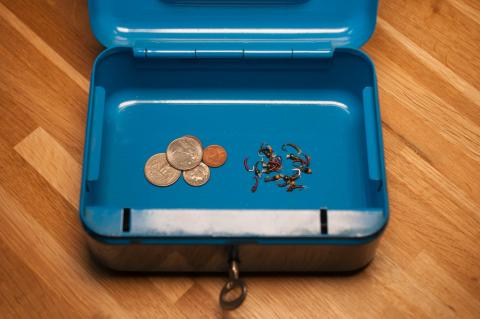[b:ac78eb3a42]I was asked about an Irish fly called the "Goat's Toe" , which is very popular in Scotland, on another BB.
It may also be of interest here as a Salmon/Steelhead pattern.
The original version had a red floss body ribbed with peacock herl but John Kennedy of the South Uist Estates in the Western Isles (Hebrides) improved and strengthened it by ribbing a herl body with red wool. Stan Headley included a fluo floss ribbing and a bottle green peacock hackle as opposed to the metallic blue of the original. It has been very successful on the large English reservoirs and the big Highland and Orkney lochs in a loch-style team. This is taken from John Roberts 'Dictionary of Trout Flies'.
Here is the recipe given:-
Hook:- 10 - 12, or long shank 12 for salmon and sea-trout.
Thread:- Black.
Butt:- One turn medium flat gold.
Tag:- Fluorescent Red Wool.
Body:- Two strands of Bronze Peacock herl, one wound up theshank and one wound down.
ribbed with four strands of GloBrite #5 (Fire Orange) twisted.
Hackle:- Bottle Green Peacock neck feather (one and a half times the body length).
A bolstering black hen hackle may be added to support the peacock hackle.
This I believe is the Stan Headley version which has been very successful
Larger versions on low-water salmon hooks are also used as single flies.
[img:ac78eb3a42]http://donaldnicolson.webplus.net/_wp_generated/wp328e38f0_0a.jpg[/img:…]
[/b]
The Goat's Toe
The forums are very quiet
The Global FlyFisher forum has existed for almost as long as the site, and the oldest posts are more than 20 years old. Forums aren't what they used to be. Social media has taken over a lot of their roles, and the GFF form is very quiet ... to put it mildly.
We keep everything online for the sake of history, and preserve the posts for as long as possible, but as you will see, quite a few of them aren't in a good shape, but rely on old images hosted elsewhere, which are no longer available, odd codes from old systems and much more, which can't be shown in a decent way.
But the posts are here, and you can - if you insist - start new threads. But don't stay awake waiting for replies, because they are unfortunately few and far apart.
Martin


I have had an extensive
[b:203eead921]I have had an extensive exchange of views about this fly on an other BB.
In the process I have done further research into its origins and development by other fly dressers.
The original version had a red floss body ribbed with peacock herl but John Kennedy of the South Uist Estates in the Western Isles (Hebrides) improved and strengthened it by ribbing a herl body with red wool. Stan Headley included a fluo floss ribbing and a bottle green peacock hackle as opposed to the metallic blue of the original. It has been very successful on the large English reservoirs and the big Highland and Orkney lochs in a loch-style team. This is taken from John Roberts 'Dictionary of Trout Flies'. The info above is from there.
Here is the recipe given:-
Hook:- 10 - 12, or long shank 12 for salmon and sea-trout.
Thread:- Black.
Butt:- One turn medium flat gold.
Tag:- Fluorescent Red Wool.
Body:- Two strands of Bronze Peacock herl, one wound up the shank and one wound down.
ribbed with four strands of GloBrite #5 (Fire Orange) twisted.
Hackle:- Bottle Green Peacock neck feather (one and a half times the body length).
A bolstering black hen hackle may be added to support the peacock hackle.
This I believe is the Stan Headley version which has been very successful.
Larger versions on low-water salmon hooks are also used as single flies.
So, there you are, blue or green hackles, they are all "Goat's Toes".
I hope this gives some ideas.
I have since realised that this is the version I dressed, excepting I used the metallic blue.
The winding and counter-winding of the peacock herl, and using flat fluo floss strands, twisted, instead of wool for the rib, were, I think, Stan Headley of Orkney, one of the best and most original fly-dressers in the UK, innovations.
I like the peacock herl technique, it gives a very nice even body and combined with the twisted flat floss strands of the rib produces a very nice body. I don't think the green or blue hackle makes a lot of difference, try both.
ps I hope everyone is OK over there in New England after that terrible storm.
[/b:203eead921]
Donald,
Donald,
Nice fly indeed. It seems pretty much like what I have seen called a Goat's Toe before, but as you know the number of variations within single patterns can be really large.
You can see [url=http://globalflyfisher.com/video/goats-toe]Davie McPhail's bid on the same pattern in our video section[/url].
Martin